Brazil’s Pantanal on £100 ($120)/ day: An In-Depth Backpacker’s Guide

Contents
- What is the Brazilian Pantanal?
- What’s the Pantanal’s budget travel scene like?
- Should I do the Pantanal independently or on a tour (+ how do I do each)?
- Hang on… how much do things cost in the Pantanal?
- How much does a Pantanal tour cost by comparison?
- What do activities in the Pantanal involve?
- What kind of wildlife can I see in this part of the Pantanal?
- Equipment you should bring to the Pantanal
- A review of Pantanal Jungle Lodge
- A quick guide to Campo Grande
- Enjoyed this post? Nice one! (+ How to thank me)
Disclaimer: This post contains affiliate links. By buying something shortly after clicking one I’ll receive a small amount of commission, at no extra cost to you.
You might also like:

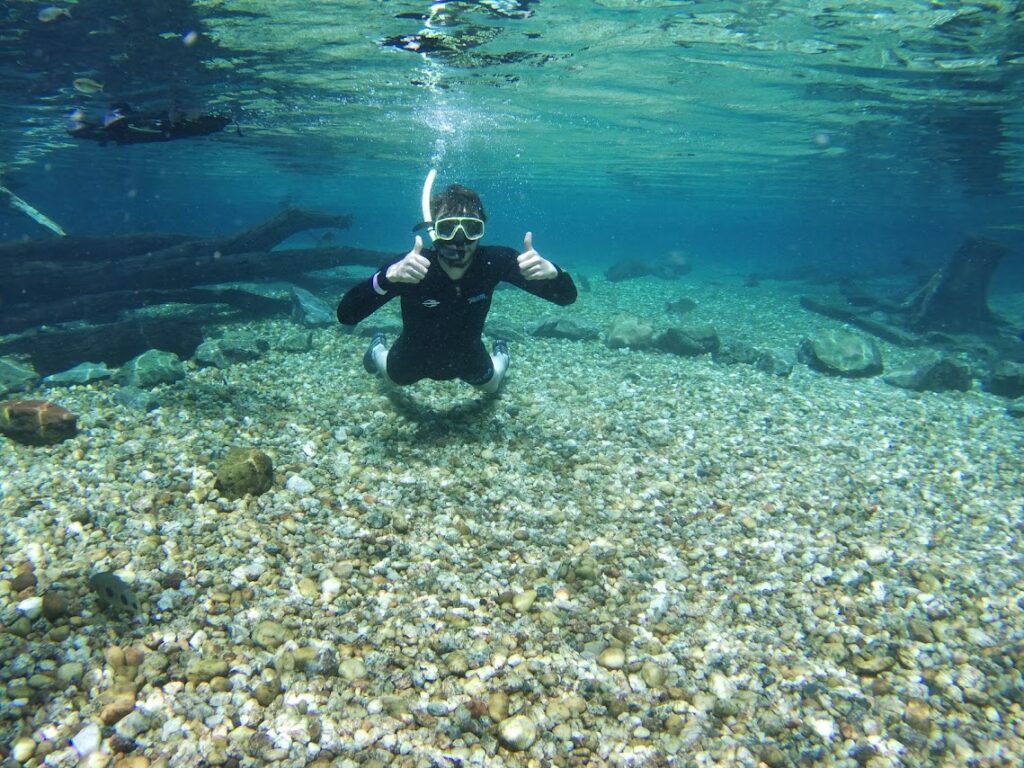
What is the Brazilian Pantanal?
The Pantanal is a vast area of swamps, rivers and grasslands in western Brazil and eastern Bolivia. Wildlife lovers will be in their element here; jaguars, caimans, capybaras, macaws, toucans and monkeys are some of the many things that can be seen here, through activities such as boat and jeep safaris. In short, this area is about as close as you can get to an African safari in South America. Additionally, this is the best place in the world to see jaguars. You still need a degree of luck and several other things, but finding South America’s largest cat here is not a long shot like it is in the Amazon.
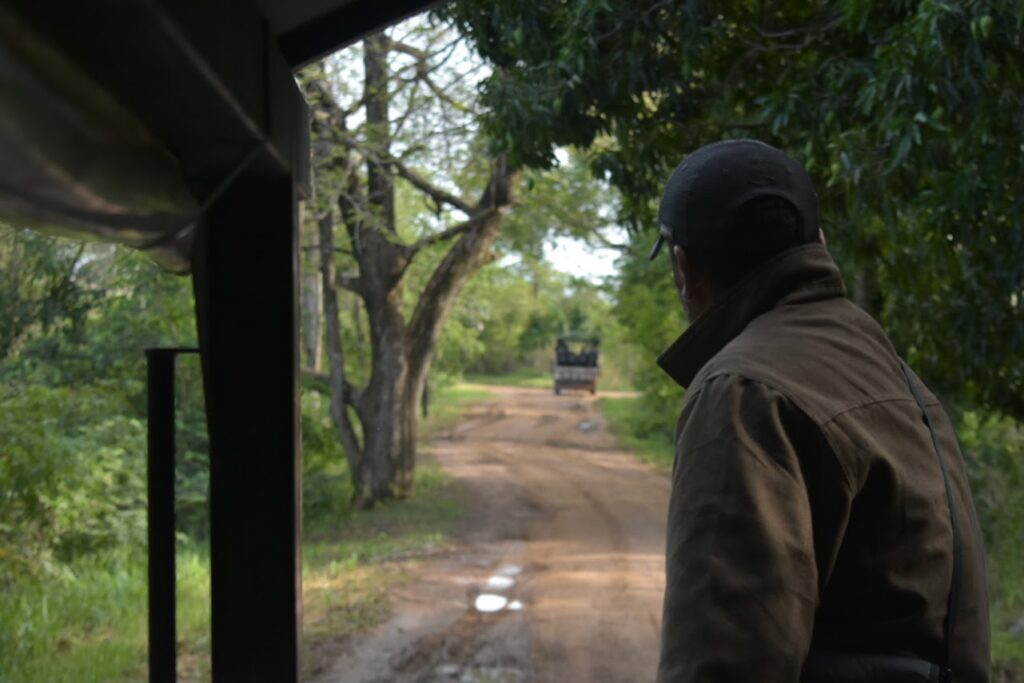
From a visitor’s point of view, the Pantanal is split into two parts: the north, which one accesses from Cuiaba, is located in Mato Grosso and generally gets a better rep for wildlife sightings. This area is generally accessed through the Transpantaneira, a dirt road and abandoned highway project that cuts deep into the Pantanal – although, contrary to its name, it stops halfway down. The southern Pantanal is generally more developed and feels less “wild”, but all in all the same animals live here and it benefits from being near to several other attractions: the Bolivian border at Corumba, the eco-tourist’s paradise of Bonito and (further afield) Iguazu Falls. Plus, it’s much cheaper to visit – small wonder that most backpackers who visit the Pantanal find themselves here.
What’s the Pantanal’s budget travel scene like?
The Pantanal’s backpacker scene is centred around one specific area in the southern half: the Estrada Parque Pantanal, a road that juts directly north from the Campo Grande – Corumba highway. Here you’ll find the Pantanal’s only lodgings with dorms, and this is also where most of the budget tour operators in Campo Grande head to.
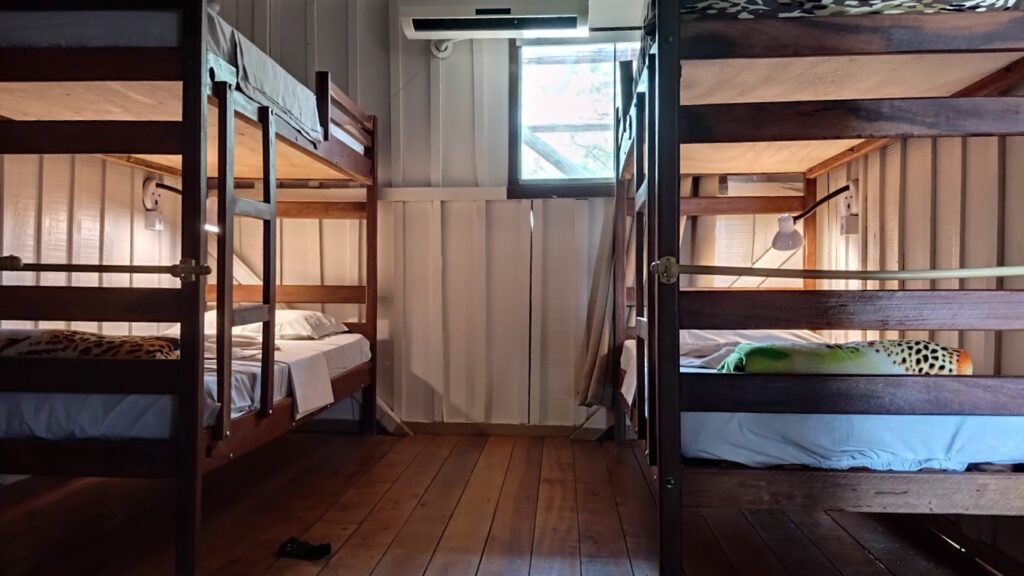
These tours will include transfers to and from Campo Grande, full-board accommodation and a set list of activities that will give you some chance of spotting wildlife. Emphasis on the word “some” – while guides are quite knowledgeable in where to find animals, most of it is about being in the right place at the right moment. Alternatively, if you want to save some money, doing so independently is perfectly possible.
Should I do the Pantanal independently or on a tour (+ how do I do each)?
Starting off with doing it independently, you first book your accommodation with Pantanal Jungle Lodge or Pousada Sao Joao. Both are available on booking.com, though you should check if these rates will also include activities.
The next step is to arrange transport. The cheapest option is to get a bus from Campo Grande or Bonito to a junction called Buraco das Piranhas, where the Estrada Parque Pantanal meets the highway. Cars from either accommodation can pick you up here with prior notice. If you want to book your bus tickets ahead of time, select Corumba as your final destination. It probably won’t hurt to check that you can actually get off at Buraco das Piranhas, but these buses are generally quite used to travellers using them as a conduit to reach the Pantanal. Alternatively, you can arrange transfers through the accommodation themselves, which will take you to the waiting cars at Buraco. In the case of Pantanal Jungle Lodge, be prepared for long waits between messages and to have to remind them that you exist every now and then.
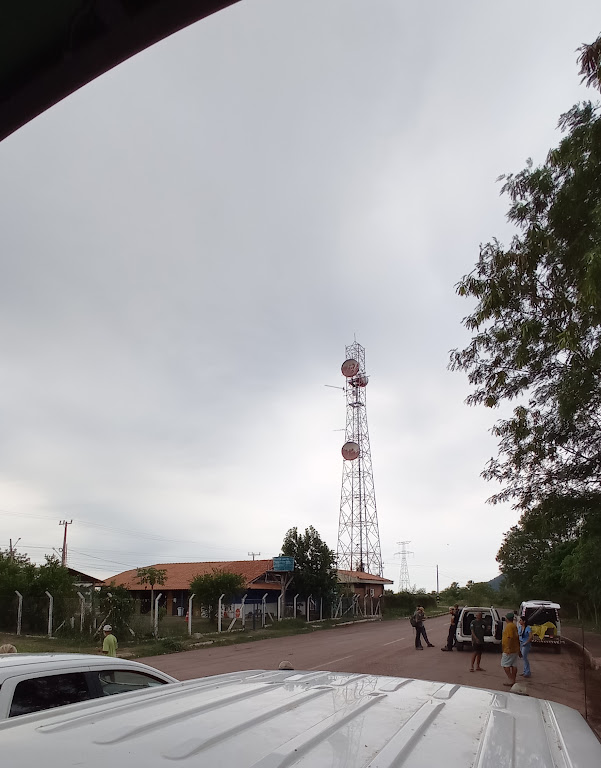
As for agencies and tour operators, most of them will send you to Pousada Sao Joao or Pantanal Jungle Lodge, so the experience will be more or less the same. Do your research before you choose an operator – unscrupulous outfits and outright scams have been a feature of Campo Grande ever since the Pantanal started attracting gringos en masse, so take some time to read their reviews and carefully check what’s included.
Gil’s Pantanal Discovery is one operator that has, thanks to years of experience and a history of good reviews, made a name for itself. Some of my fellow dorm mates were on one of their tours and seemed quite happy with everything. Another middleman who comes highly recommended is Al Macedo (Whatsapp number +5545991059964). As well as being raved about on Pantanal Jungle Lodge’s Tripadvisor, I met a Scotsman who was using him during my time in the Pantanal and spoke highly of his customer service skills. As if to prove his case, he showed me how quickly Al Macedo responded with info when he asked a question about transfers.
Side note: I was the first Scot he’d met in six months, to his delight.
Hang on… how much do things cost in the Pantanal?
Brace yourself: the Pantanal is much more expensive than other areas in Brazil.
Pantanal Jungle Lodge’s dorm beds cost me roughly £80 per night, since I’d booked directly through the website and was able to get the multi-day discount. That price included activities and all meals – the only added extras were transfers and drinks. My drinks bill averaged out to about £8 per day, which could definitely have been cut down if I’d drank fewer beers and the food wasn’t so salty. As for transfers, I paid R$150 (£25) to get from Campo Grande to PJL, and the same price for a transfer from PJL to Bonito. My five night stay, in the end, came to a little under £500.
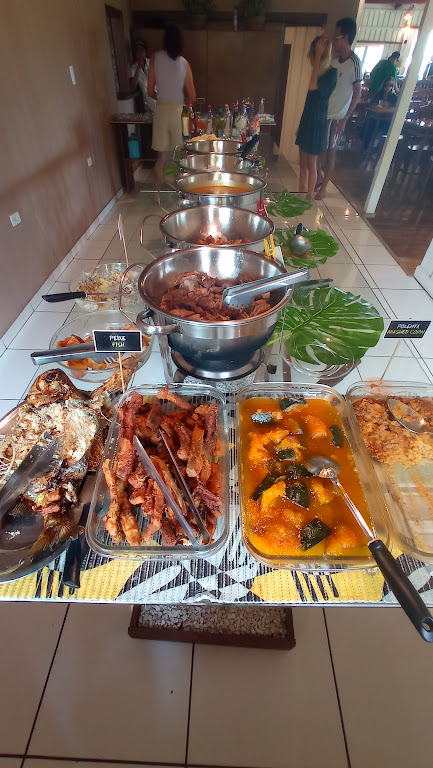
Pousada Sao Joao’s dorms on booking.com go for £46 per night, which also includes activities and meals. The property does offer boat safaris although it is one hour from the river, so you might not spend as much time on the water as with Pantanal Jungle Lodge. Like with Pantanal Jungle Lodge, they can pick you up from the bus stop. I don’t know if they can arrange a transfer from Campo Grande, but in theory it should be possible since PJL uses an external agency for theirs.
While this may sound like a lot, it’s actually dirt cheap by Pantanal standards: many other properties in the south go for at least £120 per night, while pousadas and farmstays in the north typically start at £250.
How much does a Pantanal tour cost by comparison?
When it comes to how much more expensive a tour will be, obviously doing it independently will be cheaper. However, in this case, the disparity isn’t actually all that big: the Scot who’d used Al Macedo told me how much he’d paid for his four nights, which actually panned out to about the same as I’d paid for five. Transport was included in his package, while mine was not, so this made it an even better deal. All in all, budget about £150 ($180) per day if doing Pantanal Jungle Lodge through a tour.
What do activities in the Pantanal involve?
Provided you stay at least four nights, you should end up doing at least one boat and jeep tour, canoeing, floating, horse riding, piranha fishing, a night safari (by boat or on foot) and camping.
Breaking down what each activity will involve:
-Boat tours will take you down the Rio Miranda in search of wildlife – in the dry season, these present the best chance of spotting animals since they’re more likely to drop by for a drink. Boats use comfy seats with backrests and have plenty of legroom, plus the breeze and the spray keep things cool on a hot day.
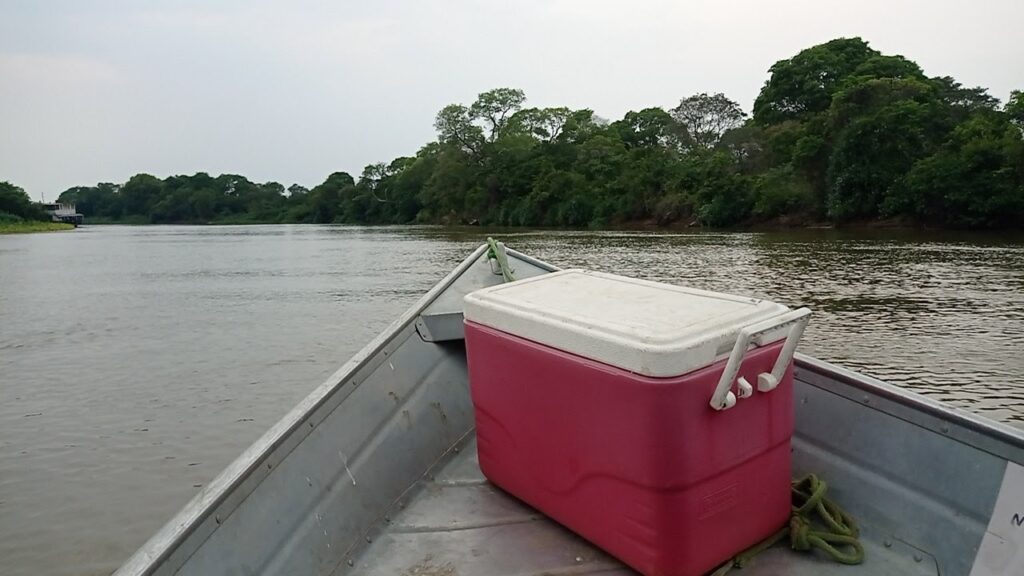
-Night safaris will involve a guide with a powerful torch shining it about the riverbank and looking for animals. Ironically, this makes animals easier to find: when a torch is shone on them and they stare back, their “eyeshine” gives away their presence. It’s likely that you’ll see this in action yourself if the guide happens to spot an animal directly ahead.
-Jeep safaris will take you up the Estrada Parque Pantanal and possibly down some side-tracks. You’ll pass by some waterholes and fields which should turn up something. These are often combined with an hour-long walk, in which the guide will point out any animals you come across.
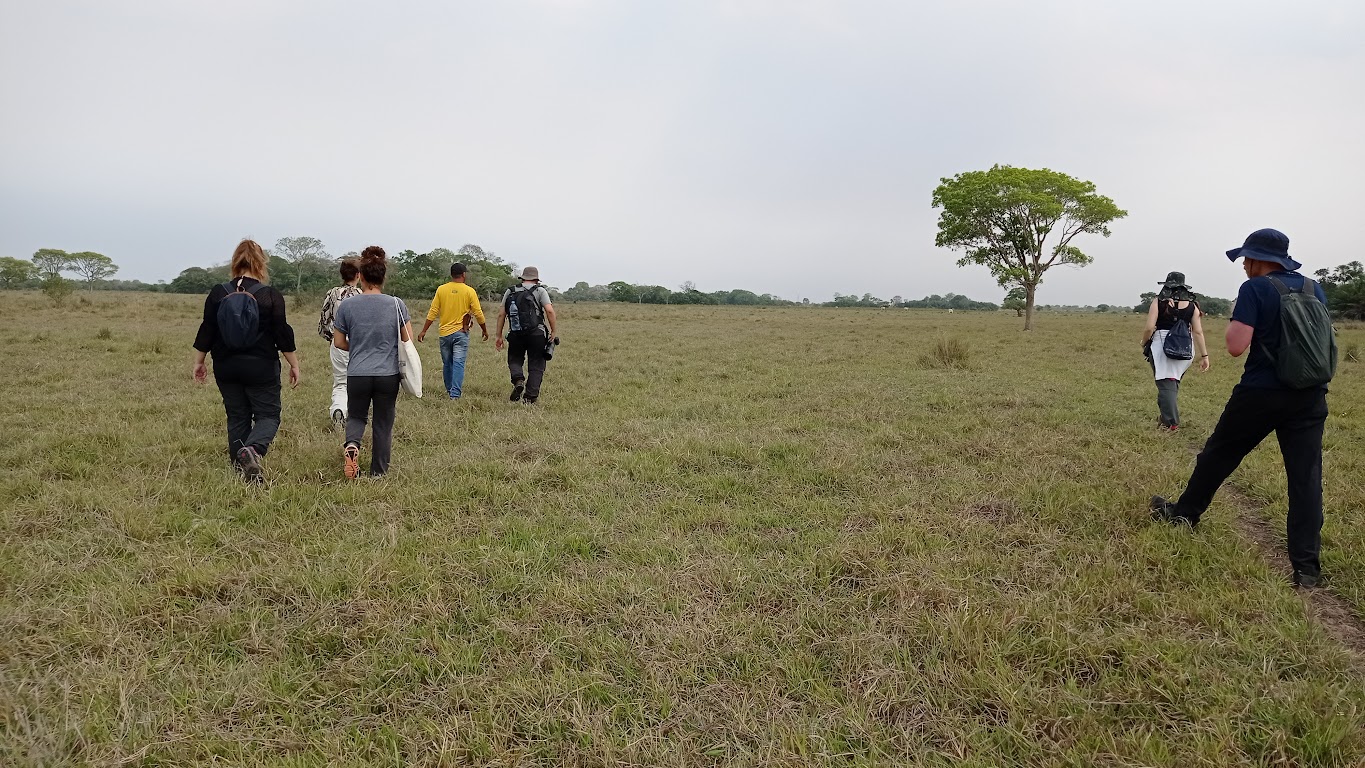
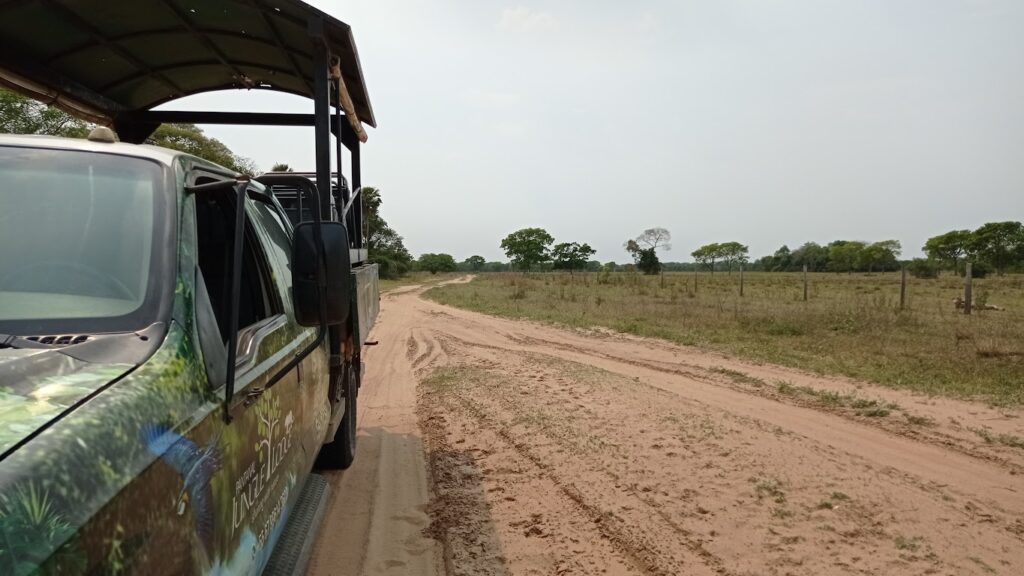
-Horse riding will start off with you getting kitted up with a helmet and hairnet (for hygiene reasons) and then getting a quick lesson in how to control the horse. It will then, along with all the others, walk in a single-file line after the leader horse, on which rides a guide. Don’t expect to go galloping off into the sunset: as the leader sets the pace, most of it will be spent with the horse walking slowly. Mine did break into a trot at one point, but let me tell you – between the bumpy ride and the hardness of the saddle, it’s not much fun if you’re a guy. Ahem.
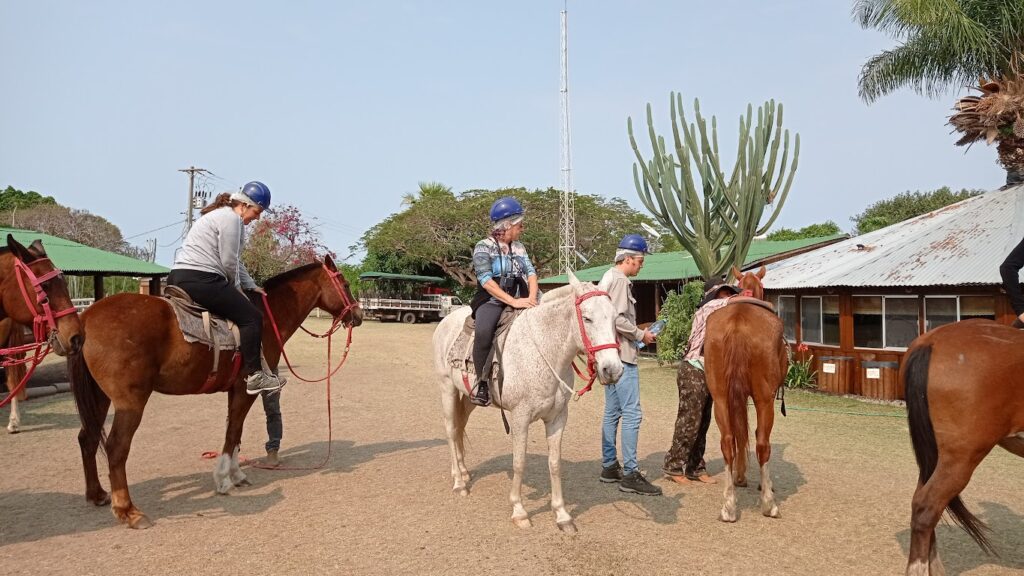
-Canoeing will involve you setting off from the start point with a partner and paddling your way downstream. You can go on for as long as the timer and your energy will allow, but do remember to take breaks – if for no other reason than to appreciate the serenity of it all. Once the time runs out, the guide on a motorboat will collect you and town the canoes back up the river.
-Flotation will involve being taken upriver in a motorboat, and then jumping in the water with a pair of pool noodles. And then… you just float downstream. The guide assured us that no guest has ever been attacked by animals, but they stay close by for good measure.
-Piranha fishing will involve you standing by a river or pond and dipping a line on a bamboo pole into the water. Don’t worry about casting it far out – piranhas swim quite close to shore. Where things get tricky is actually hooking one: piranhas nibble more than they swallow, and I could sometimes see them swimming up and biting my meat before disappearing again. Apparently, the key is to wait for a tug, wait a few seconds and then yank the rod up – alas, it didn’t work for me.
-Camping will involve you being taken upriver to a site near the tributary between the Rio Miranda and Rio Vermelho – despite the latter’s name meaning “yellow river”, it’s actually much darker in colour than the Miranda, making the meeting point a sight to behold. You’ll pitch your tent, cook up a dinner of chicken and potatoes, and fall asleep to the local chorus of frogs and crickets, under the light of hundreds of stars and fireflies.*
*Or at least, that’s what I imagine would have happened if a storm hadn’t broken out and cancelled my trip.
What kind of wildlife can I see in this part of the Pantanal?
A lot – this is one of the best locations in South America for wildlife watching. Since the Pantanal borders the Amazon, it shares many of its well-known residents. Unlike the rainforest, though, the Pantanal’s open terrain means that animals are much easier to spot out here: a girl who’d been to the Amazon a week before told me that on her first day in the Pantanal, she’d seen more wildlife than her four days in the Amazon.
The jeep safari and horse riding will take you past waterholes where marsh deer and birds will be feeding, and caimans will be cramming together for shelter from the sun. In the fields it’s likely that there will be rheas, South America’s equivalent of ostriches, and if you’re lucky there may be giant anteaters ambling about. Since the jeep safari will also involve a walk, it’s likely that you’ll spot howler monkeys, toucans and macaws in the trees. The monkeys are one you’ll almost certainly see before you hear, since their calls (which are best described as being like Arctic wind) can be heard for miles around.
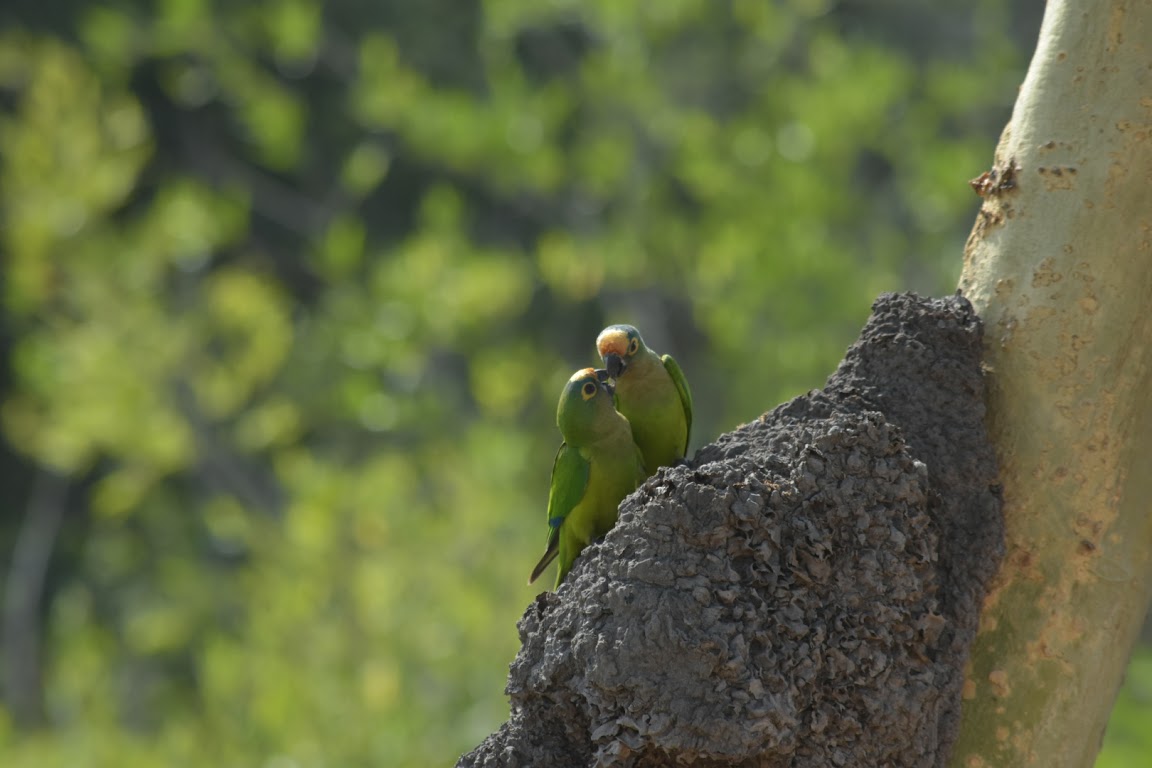
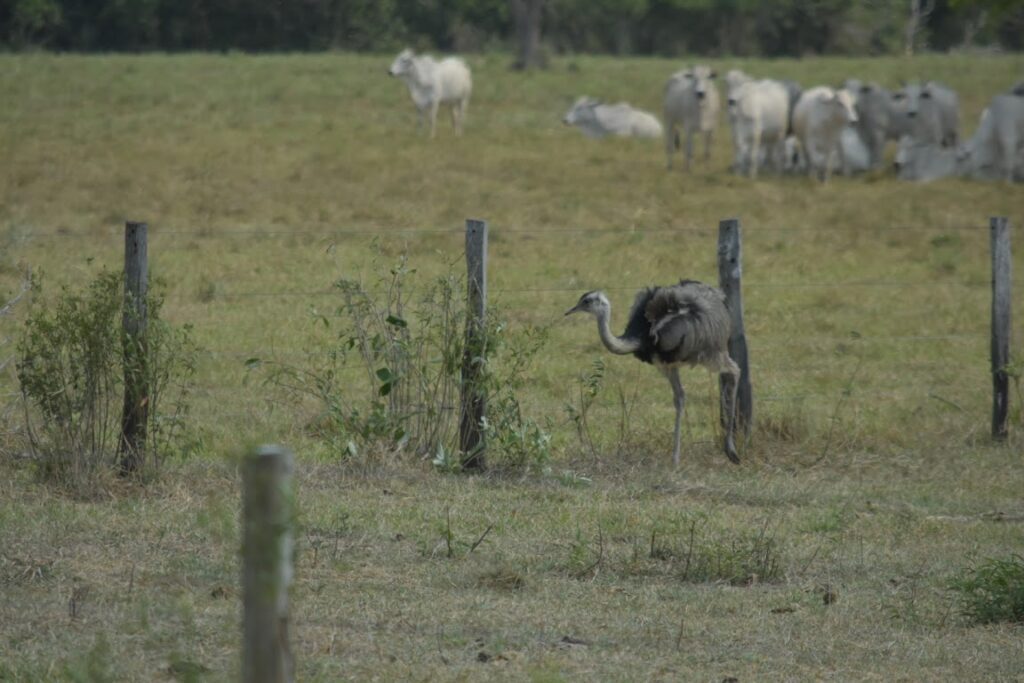
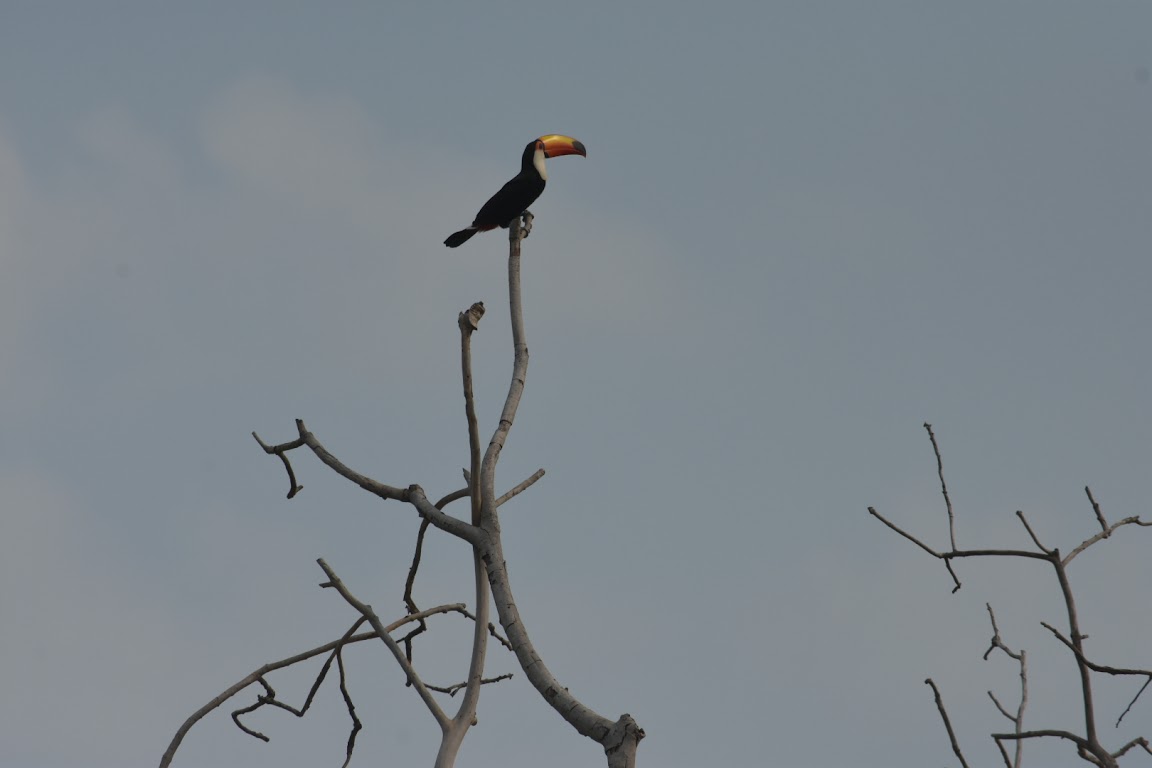
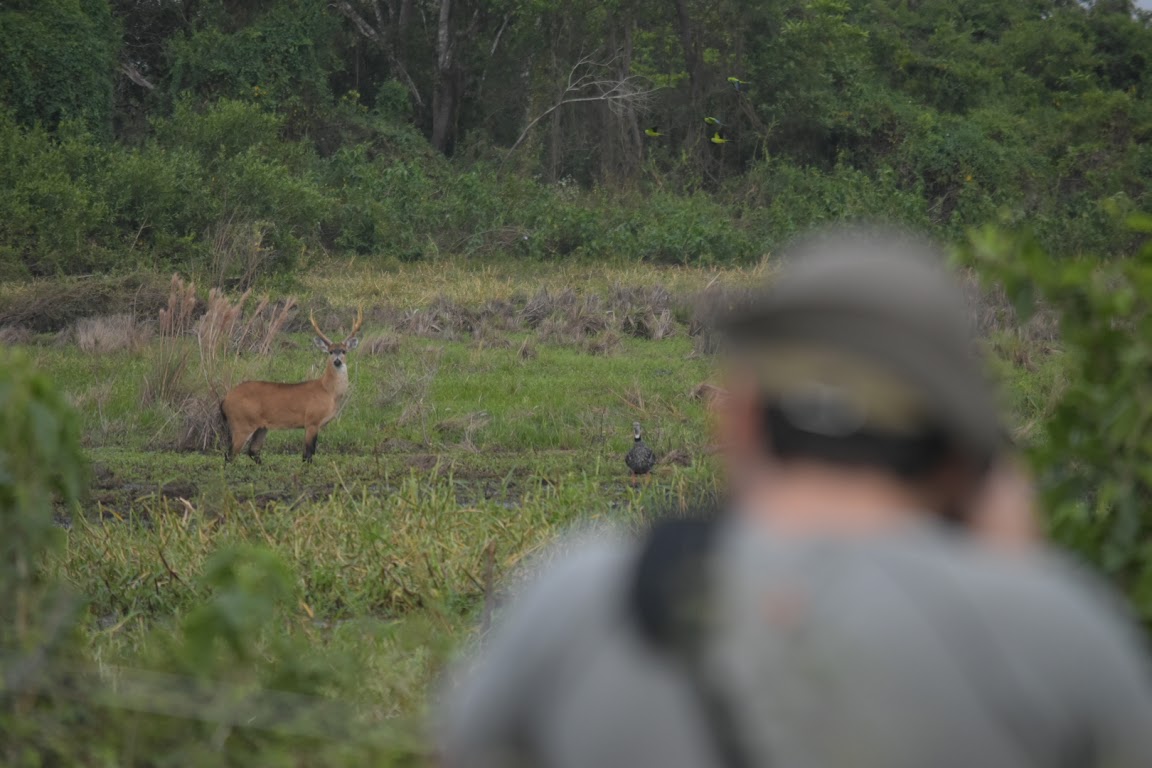
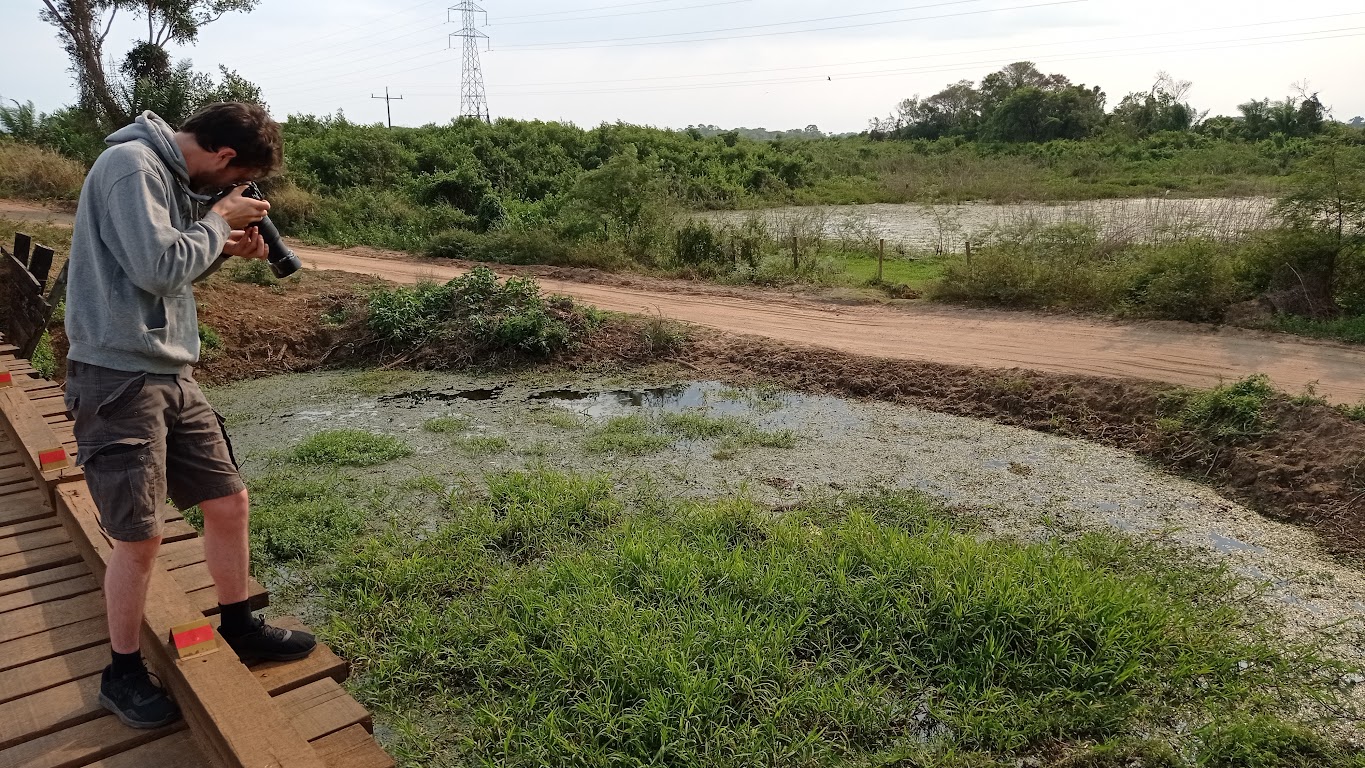
River-based activities are practically guaranteed to turn up copious amounts of capybaras and caiman resting on the banks, as well as birds on the trees. Eagles, cormorants, herons and smaller parakeets are all likely to make an appearance. Giant otters are also likely to be seen since a family regularly patrols the river banks in broad daylight, and howler monkeys can often be seen in the trees here too. If you’re lucky like I was, you may even see a tapir drinking or swimming – this one wasn’t at all shy, and let us have amazing views for a good few minutes on land and in the water.

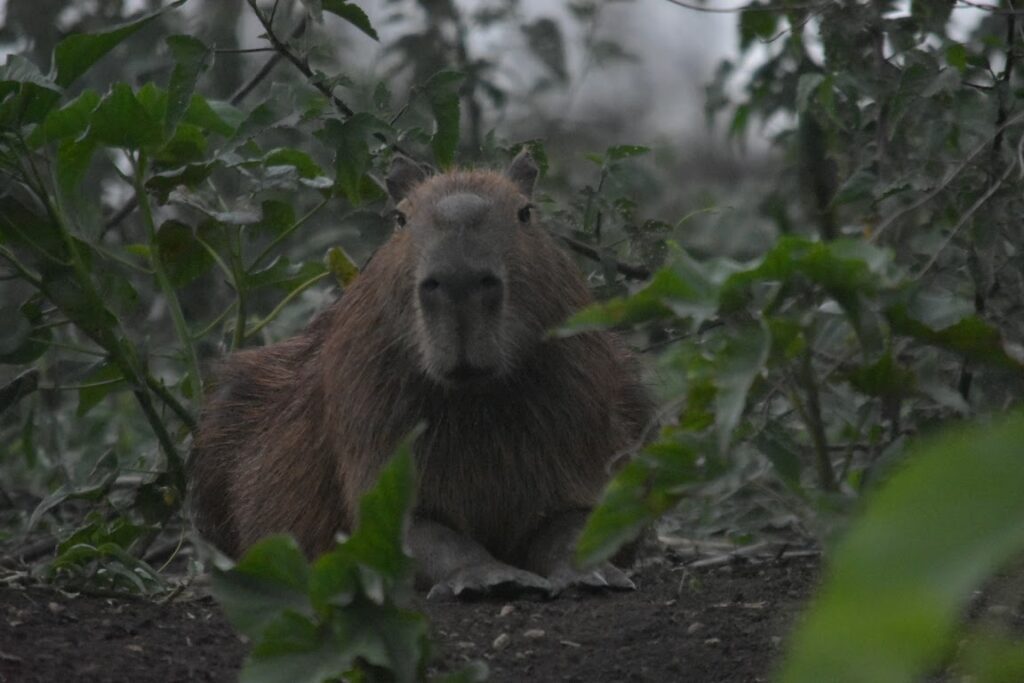
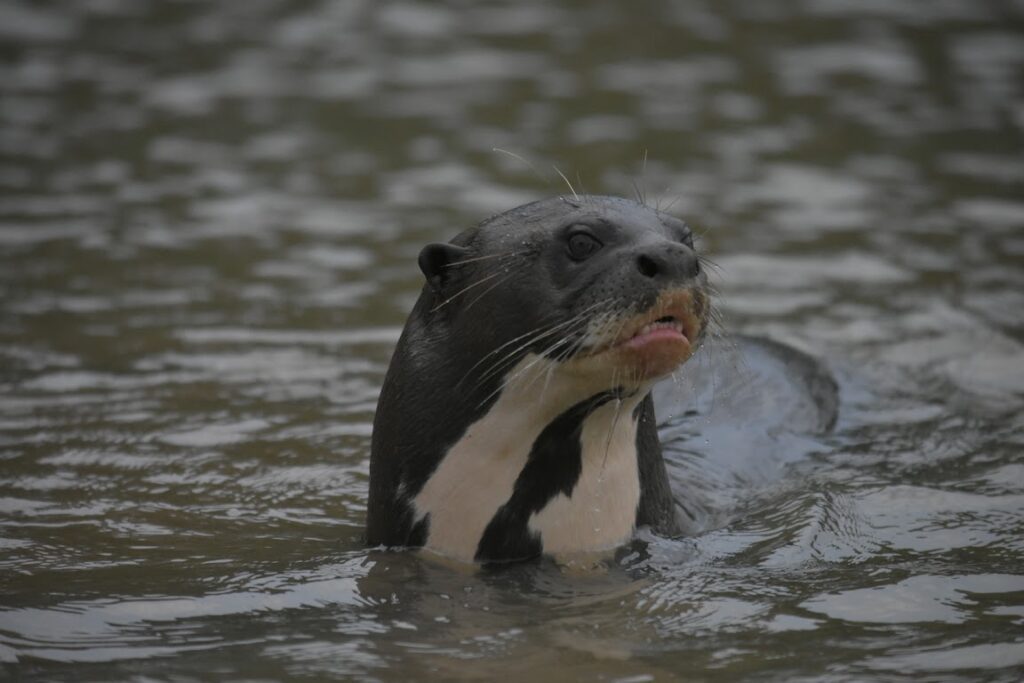
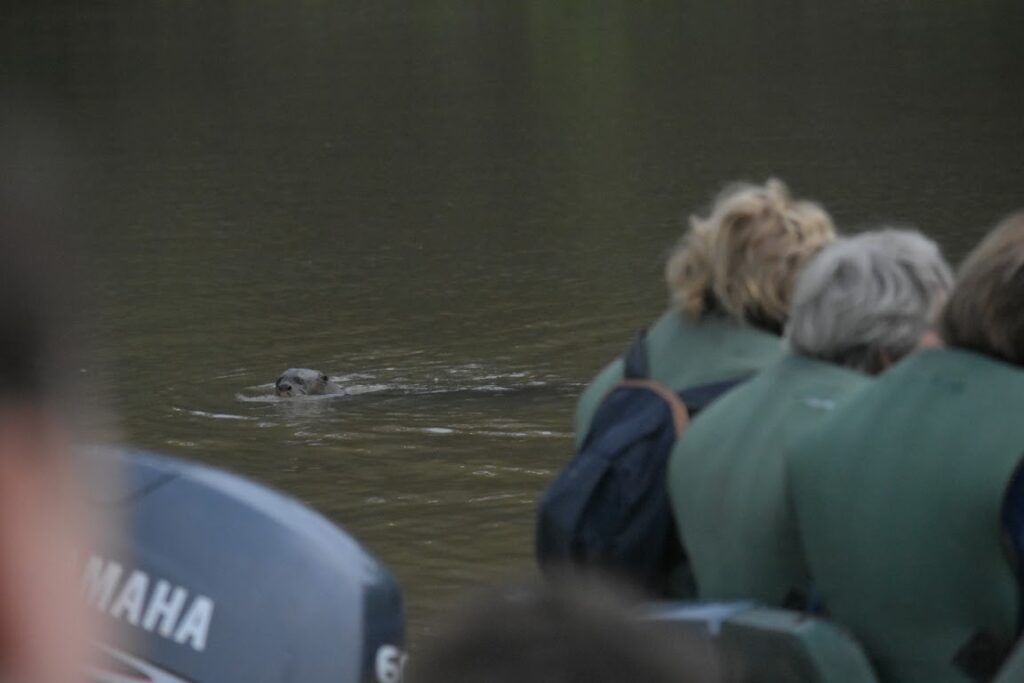
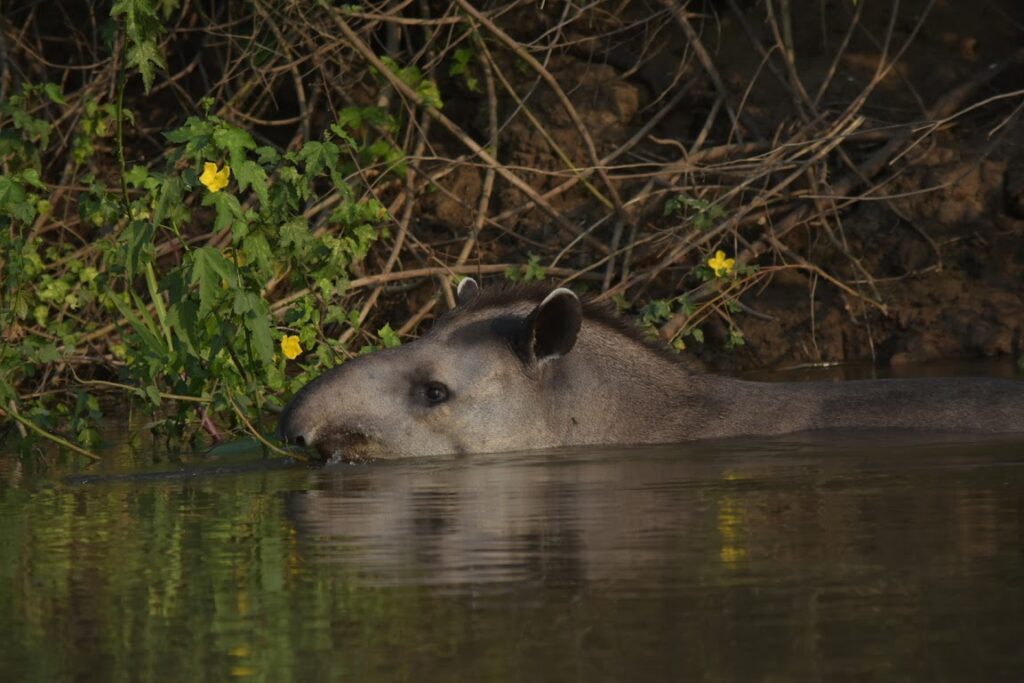
Of course, the star of the show is the jaguar. Realistically speaking, you’re only likely to see this big cat here if you’re on a river-based activity. You do need a certain amount of luck to spot one, but not a high one: sightings seem to happen on roughly 40% of trips, and a group did spot one on a boat safari while I was staying there, so it is possible. Also, I may have seen one’s eyeshine during a night safari since the eyes matched the height and colour of a jaguar’s. Unfortunately, the culprit disappeared before I could see the body, so I’m neither calling nor counting it. All in all, your chances of seeing one in this part of the Pantanal are not high, but they’re not exactly low either – and they’re certainly much higher than in the Amazon, where someone who’d spent two months volunteering told me they’d never seen one.
Both PJL and Pousada Sao Joao have wildlife on the properties themselves too: parakeets make their nests in the palm trees surrounding Pousada Sao Joao, caracaras swarm the lawns of Pantanal Jungle Lodge and both properties have platforms where hyacinth macaws often come to feed on the bananas laid out for them. Groups of coatis also regularly pay a visit.
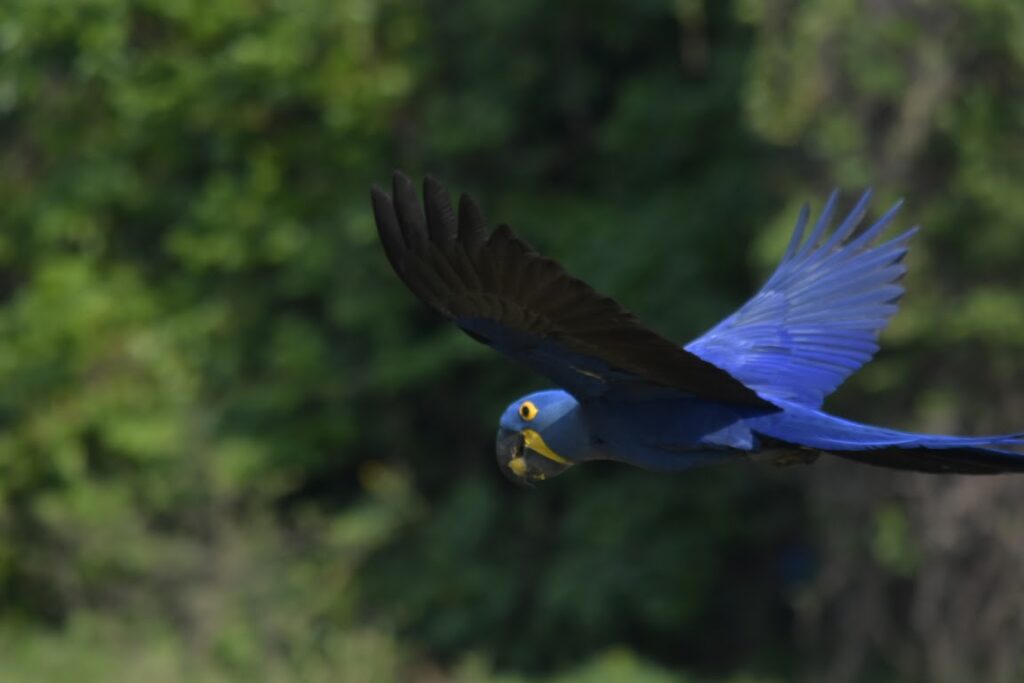
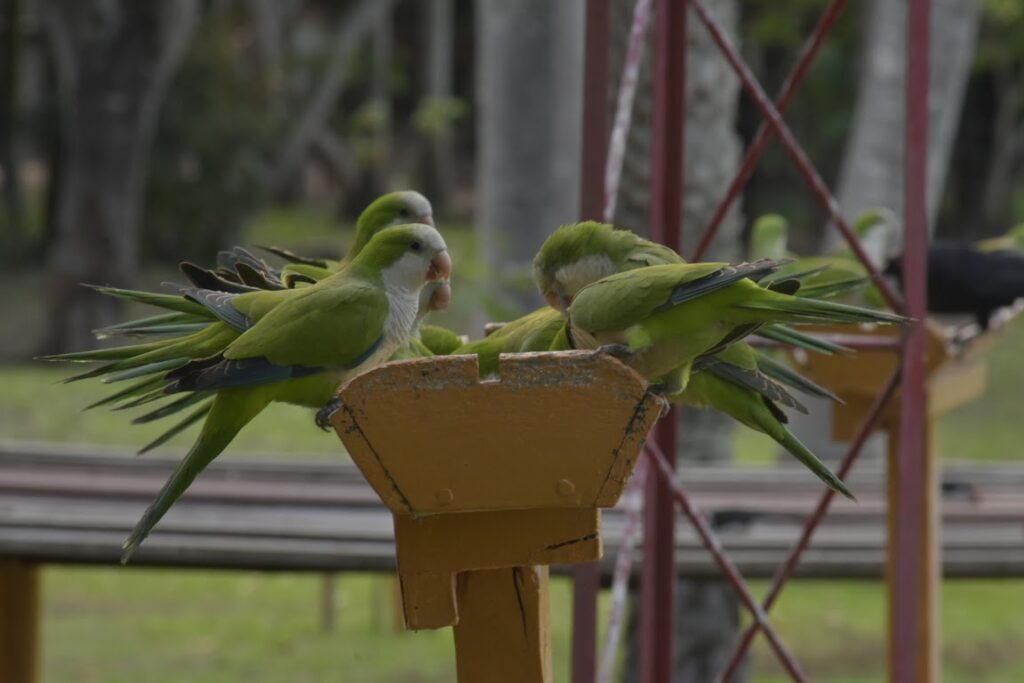
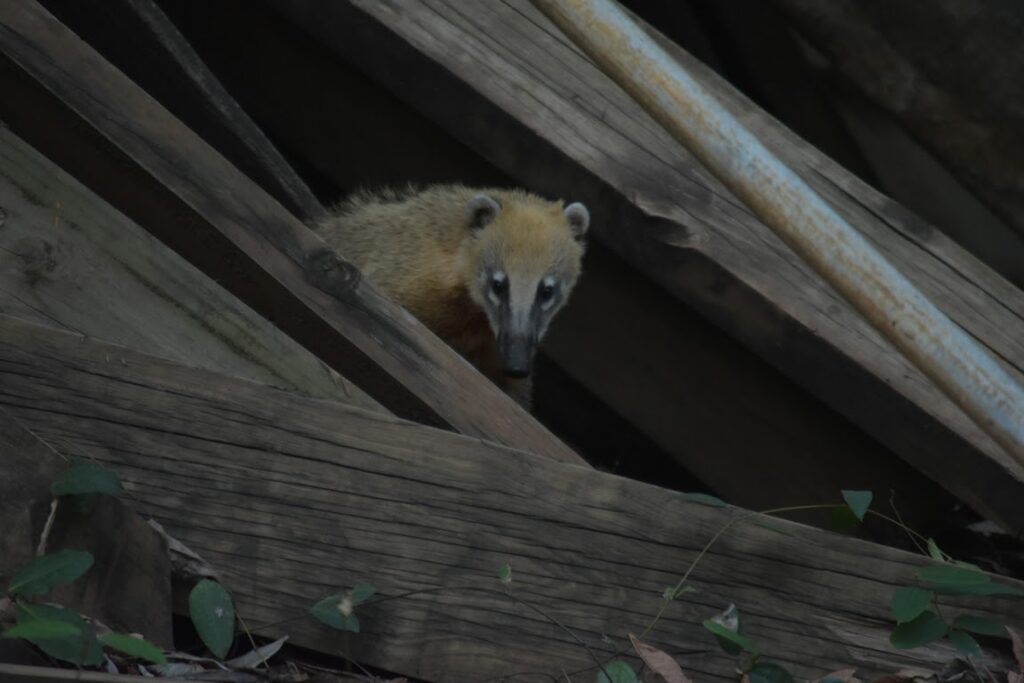
Equipment you should bring to the Pantanal
A good pair of binoculars – being an open space, animals are often quite distant in the Pantanal. Furthermore, if you’re on a boat tour, you’ll want a good pair to act as a spotter – guides are great at this, but chances are they’ll have their attention focused on driving the thing.
8×42 binoculars are a good choice since their magnification (the 8 number) will be enough to get pin-sharp views of many of the Pantanal’s animals, while their lens diameter (the 42) means views won’t come out too bright or too dim, whatever the time of day.
A good pair of rainguards for ^^ – Rainguards do what they say on the tin and more, protecting your binoculars’ lenses from water droplets while boating and dust while jeeping.
Thanks to mine, I’ve been using my binoculars for 15 years and counting.
A zoom lens – bringing a point and shoot on safari is like bringing finger guns to a war. That said, you don’t necessarily need a lens that looks like the Hubble Space Telescope to take good wildlife shots – I used a 300mm lens for my Nikon that fit nicely into my crowded backpack and managed to get the shots you see on this blog post.
Here’s the equivalent if you’re a member of the Dark Side (AKA Canon).
Life Straw Bottle – Like much of Brazil, tap water in the Pantanal generally isn’t safe to drink, and many lodges charge inflated prices for bottled water. A Life Straw bottle makes this tap water completely safe though, with 99.999% of viral and bacterial nasties removed. Plus, the environment will thank you!
Mosquito repellent – I travelled up and down Latin America, and nowhere were the mosquitos as relentless as the Pantanal. Not even the Amazon or the rainforests of Costa Rica came close – such is life in a swamp. A bottle of jungle-strength mosquito repellent is close to essential out here, especially since mosquitos have been known to carry diseases out here.
A type C adapter – like everywhere else in Brazil, the Pantanal uses type C sockets (two round holes). Sometimes you may come across type N (three round holes), but type C adapters are compatible with these too.
If you visit nearby Bolivia, which uses a different type, you may want to get a universal adapter instead, so that you’re not carrying around too many.
An AKASO V50X action camera – this budget alternative to GoPro comes with a waterproof case, making it ideal for strapping to your lifejacket as you go canoeing or to your wrist if you go snorkelling in nearby Bonito afterwards.
The picture quality isn’t as pin-sharp as a GoPro, but for the price point I thought it offered more than a fair trade-off. Plus, action cameras are all too easy to lose, no matter how much money you spend on them. Here’s an example of a video I took with mine later in the trip:
A review of Pantanal Jungle Lodge
As I personally stayed here like many backpackers before me (and after, for sure), it only felt right to share my thoughts on this place.
Accommodation is a job well done. Rooms come with air-conditioning, a terrace area with chairs and mosquito screens, and their own bathrooms. Cleaning happens daily, and fresh arrivals are given towels folded into shapes and soap and shampoo – even in the dorms. Dorms also have lockers with enough space to store a small backpack, and in a bit of inspired thinking they also have power sockets in them, so you can charge your gadgets and keep them secure while you’re gone.
Food can be hit and miss – if you don’t like or get tired of salty food, you’re going to have a bad time here. Still, there is a decent selection especially when one considers how isolated the place is: veggies, meat, rice and pasta are on offer for lunch and dinner, as well as the occasional piranha that gets caught. This will be followed up by a typical Brazilian pudding, usually a mixture of fruit and cream of some sort. Breakfast is a mix of bread, cheese, ham, scrambled eggs, sausages in sauce, coffee and juice.
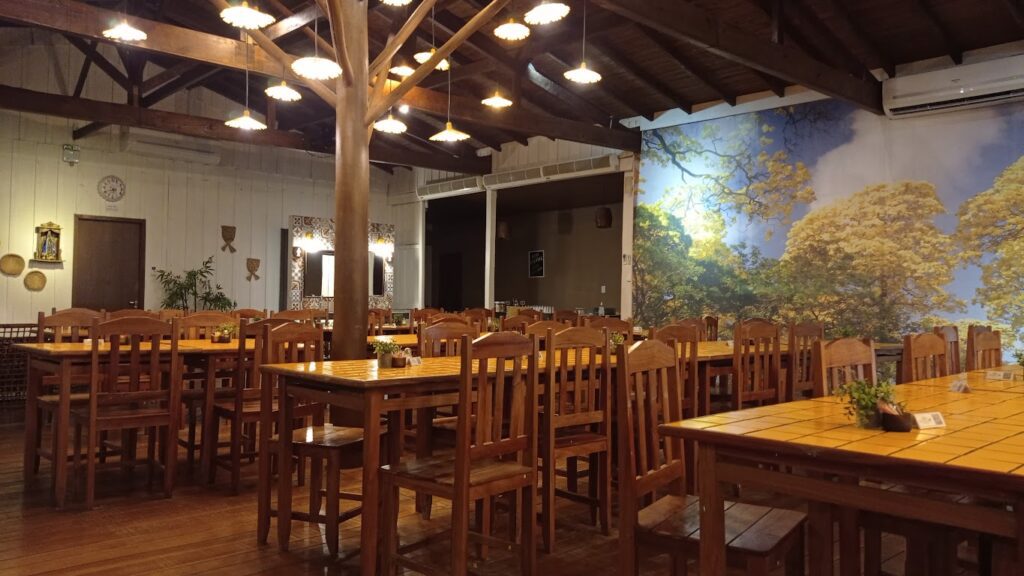
Staff were also a mixed bag – some were friendly and smiley, others were pretty melancholy. Given that hundreds of tourists come and go every month, don’t go expecting pousada-style warmth from them.
The social scene is great. Given this lodge’s popularity with backpackers, it was quite easy to meet other people here and swap travel stories from Brazil and beyond over a game of pool or a cold bottle of Brahma.
In terms of activities, you’ll typically get two of the aforementioned ones per day, one in the morning at 7.30 and one in the afternoon – either at 14.30 or 15.30. What did miff me personally you won’t get to choose your activities or when you do them. As a result, the difference in experience between independent travellers and those on tour won’t vary that much, and you may do the activities with the best chance of spotting wildlife at the worst times. Activities and their timings will be announced on the day, but are subject to change (mine did quite a few times). As a general rule of thumb, you should assume you’ll need to get up at 6.30AM for a morning activity, and then you’ll get an afternoon one. The night boat safari will of course take place after dark, but you’ll likely only get one during your stay.
As a result, there’s a lot of down-time. Pantanal Jungle Lodge has a pool and bar area with classic pub games (pool and table football), as well as good WiFi if you need to get work or Netflixing done. Do bear in mind that these quiet periods can be lengthy: I had one day where I got back from a morning activity at 9AM, which meant I had nothing to do until 3.30PM. Needless to say, it can become dull if you’re a naturally active person.
While you technically aren’t allowed to do any activity more than once, I did end up doing so a couple of times since I stayed five nights. Note that you won’t get any refunds for missed activities, or if it rains.
A quick guide to Campo Grande
Many people skip through Campo Grande, staying in the city for the night on the way to or from the Pantanal. If you find yourself with some time to kill, Parque das Nacoes Indigenas is a great way to spend half a day. Whether you’ve been to the Pantanal or have yet to go, the sight of capybaras lounging around a park pond with skyscrapers in the background is one to behold. You can also find macaws, coatis and burrowing owls here. Within the park’s eastern end lies the Museu Cultural Dom Bosco, a museum depicting the Pantanal’s wildlife and how its indigenous inhabitants lived. It’s not very big, with only two large rooms – one is filled with stuffed animals and fossils, the other with indigenous tribes’ weapons, clothing and crafts. Still, if you’re into either and don’t mind the R$20 entry fee, it’s a good way to spend an hour.
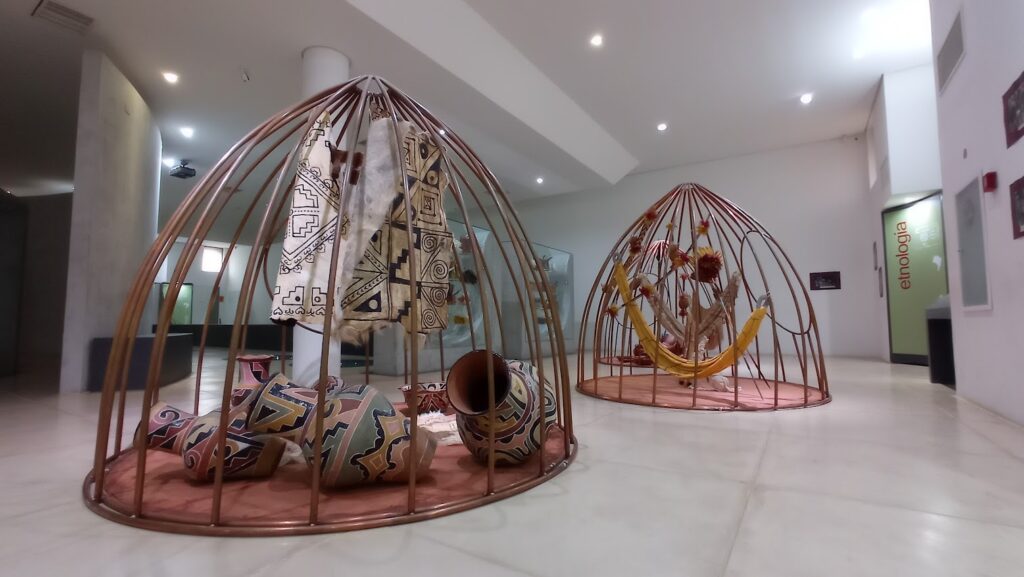
In terms of where to stay, I stayed at Espaco Orla Morena on my way to the Pantanal. At £14 per night for an air-conditioned private room with an ensuite, it was already great value. And then, I found out that across the road is a place where I can get a burger thicker than my fist for R$14. On my way back, I stayed at Hostel Raizer. I absolutely loved this place – the cheapest dorms in town at £8 per night come with lockers, shelves and their own private bathroom. In addition, there’s a pool and laundry facilities, the woman who owns it is a cheery people-pleaser and there’s a shopping mall just up the road with a variety of options for meals.
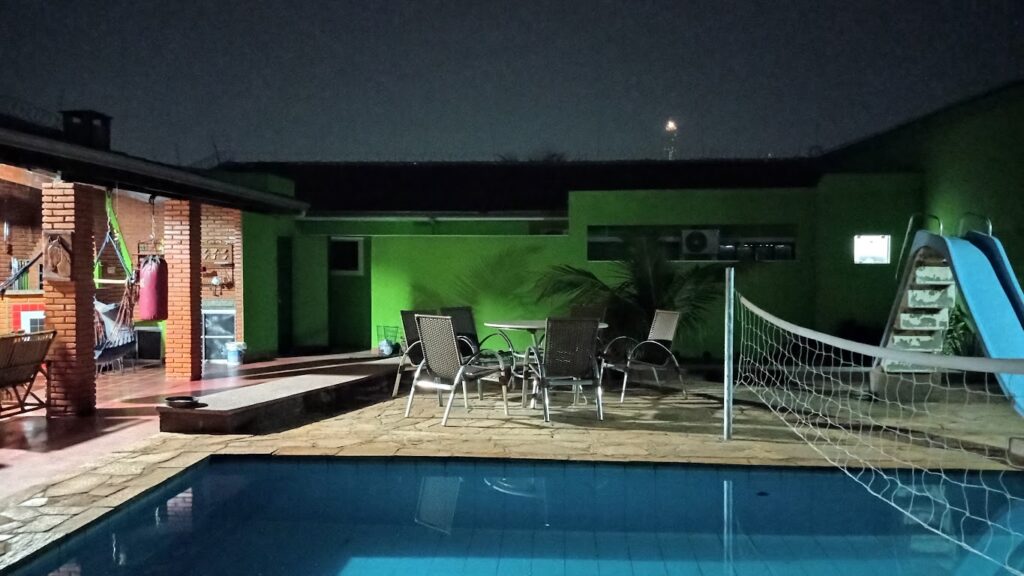
Campo Grande is by and large a safe city, and both times I stayed there I felt safe walking around at night. As with anywhere in Brazil, don’t throw caution to the wind, and do ask your accommodation staff how safe it is to be wandering around the streets of the accommodation’s neighbourhood after dark.
Enjoyed this post? Nice one! (+ How to thank me)
If there’s anything I’ve missed please feel free to contact me or let me know in the comments below. Likewise if you’d like to thank me, and if you want to do so in another way then please consider making some of your trip’s bookings through the following links. By doing so I’ll earn a small commission, and it won’t cost you a penny more!
Booking.com – has a wide array of options in Campo Grande, Bonito and Corumba, at every budget level. Pantanal Jungle Lodge is also on here.
Busbud.com – This site makes booking bus tickets in Brazil easy since it’s all in English, provides clear instructions and doesn’t require a CPF (Brazilian ID number) like many of the other sites do.



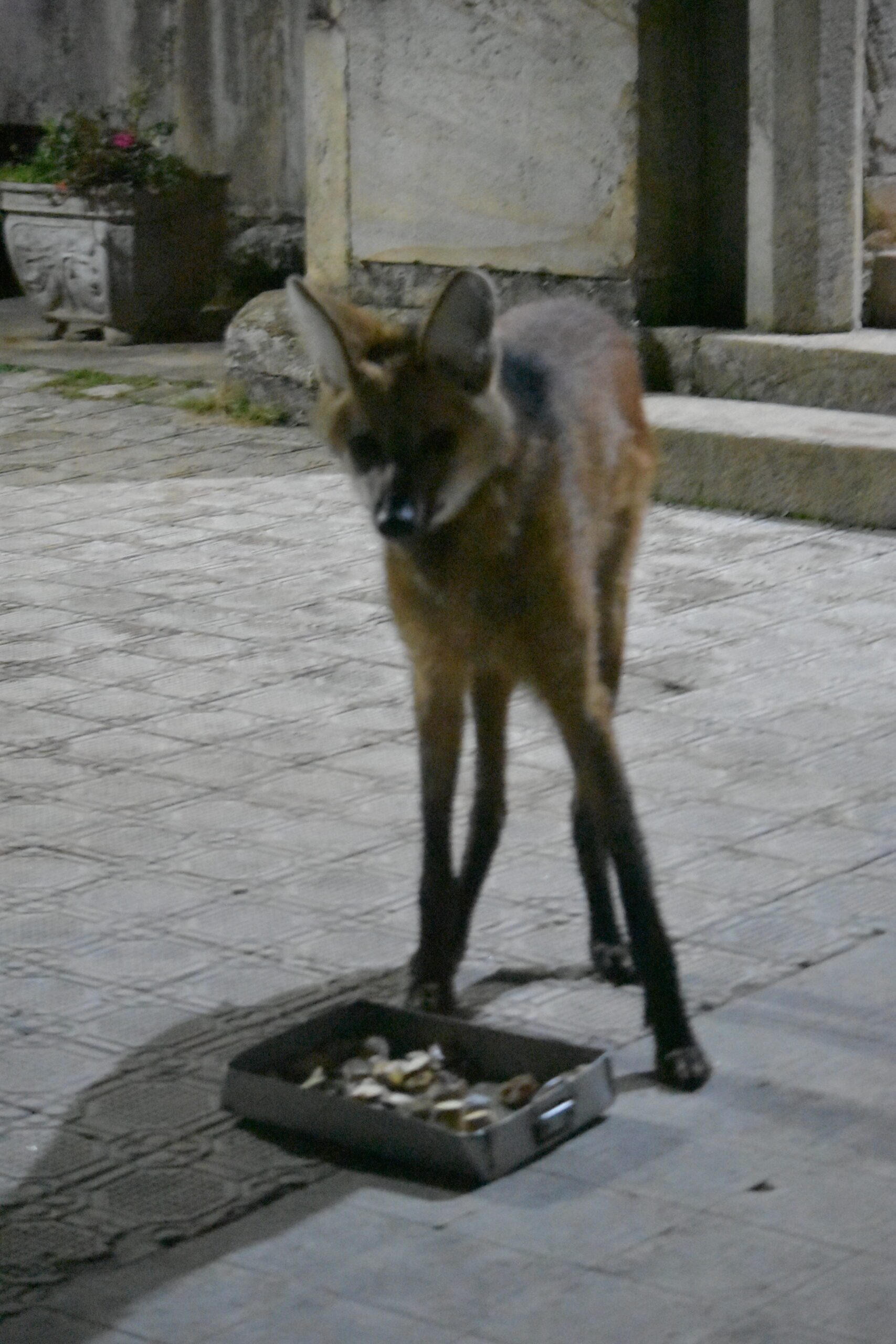
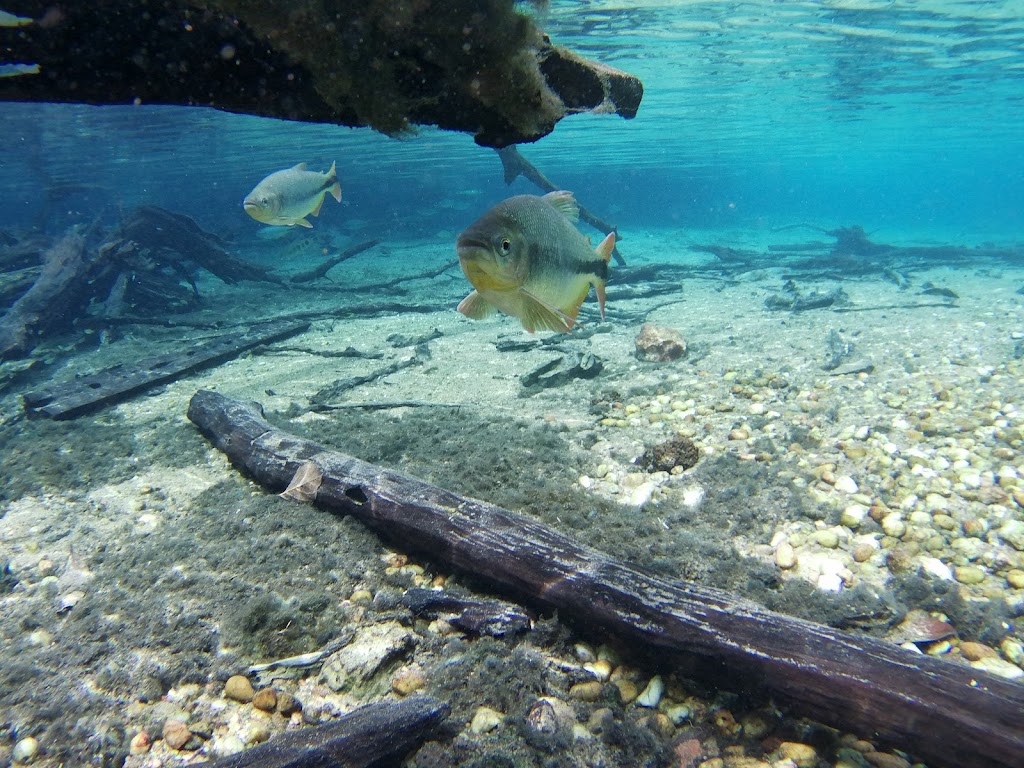
Andrew tribe
Hello, sorry if I’m missing it but do you have an actual link to the Jungle Lodge accommodation, I’m not sure if I’m looking at the right one!
Shaun
Hi Andrew! No worries, here’s their website: https://pantanaljunglelodge.com.br/
If they’re full or you’d prefer to look at alternatives, there are also quite a few nearby options on Booking.com: https://booking.tp.st/1Ew95hFT
Hope that helps!
Pauline Joyce
Thoroughly helpful, thanx x